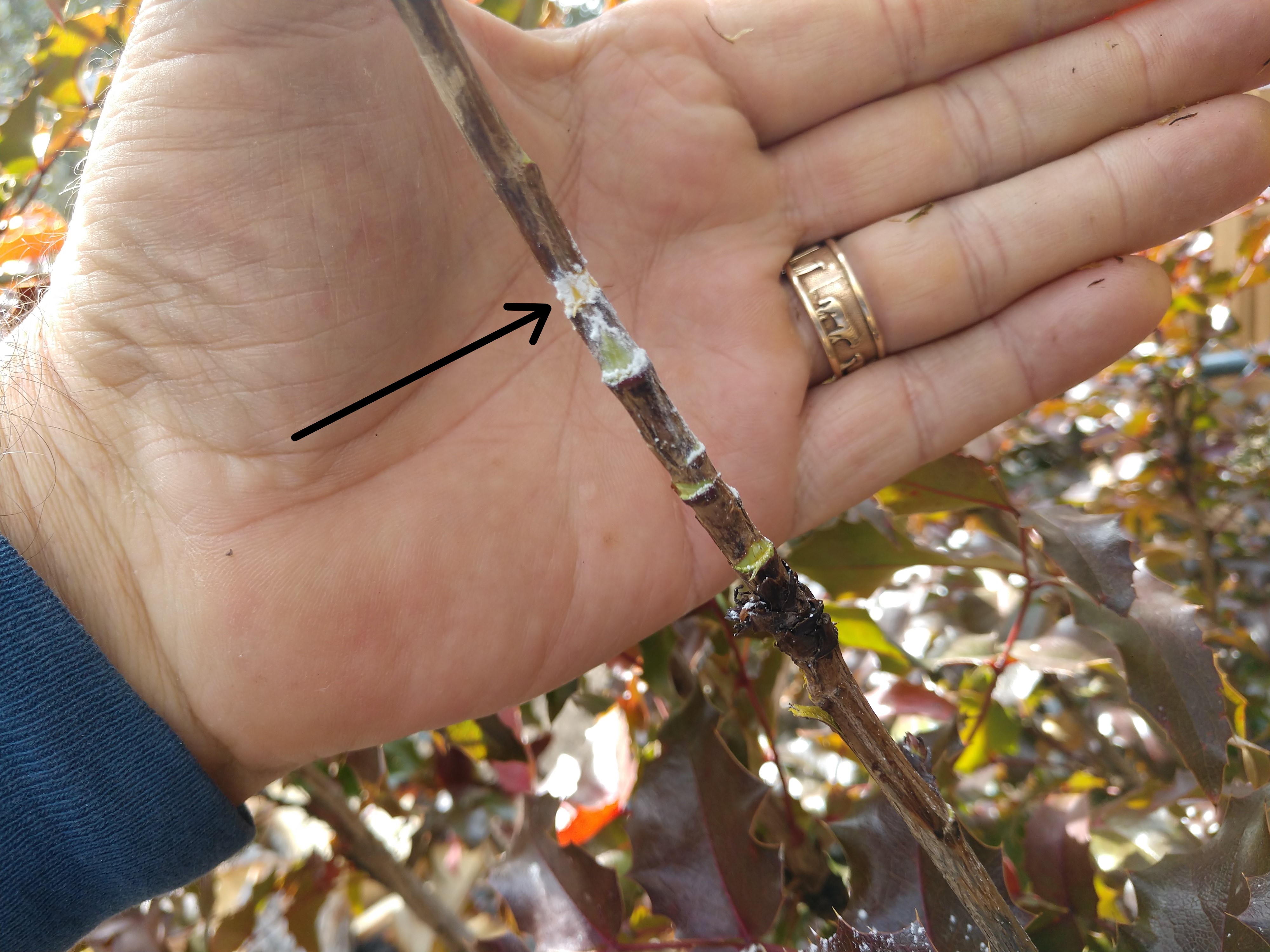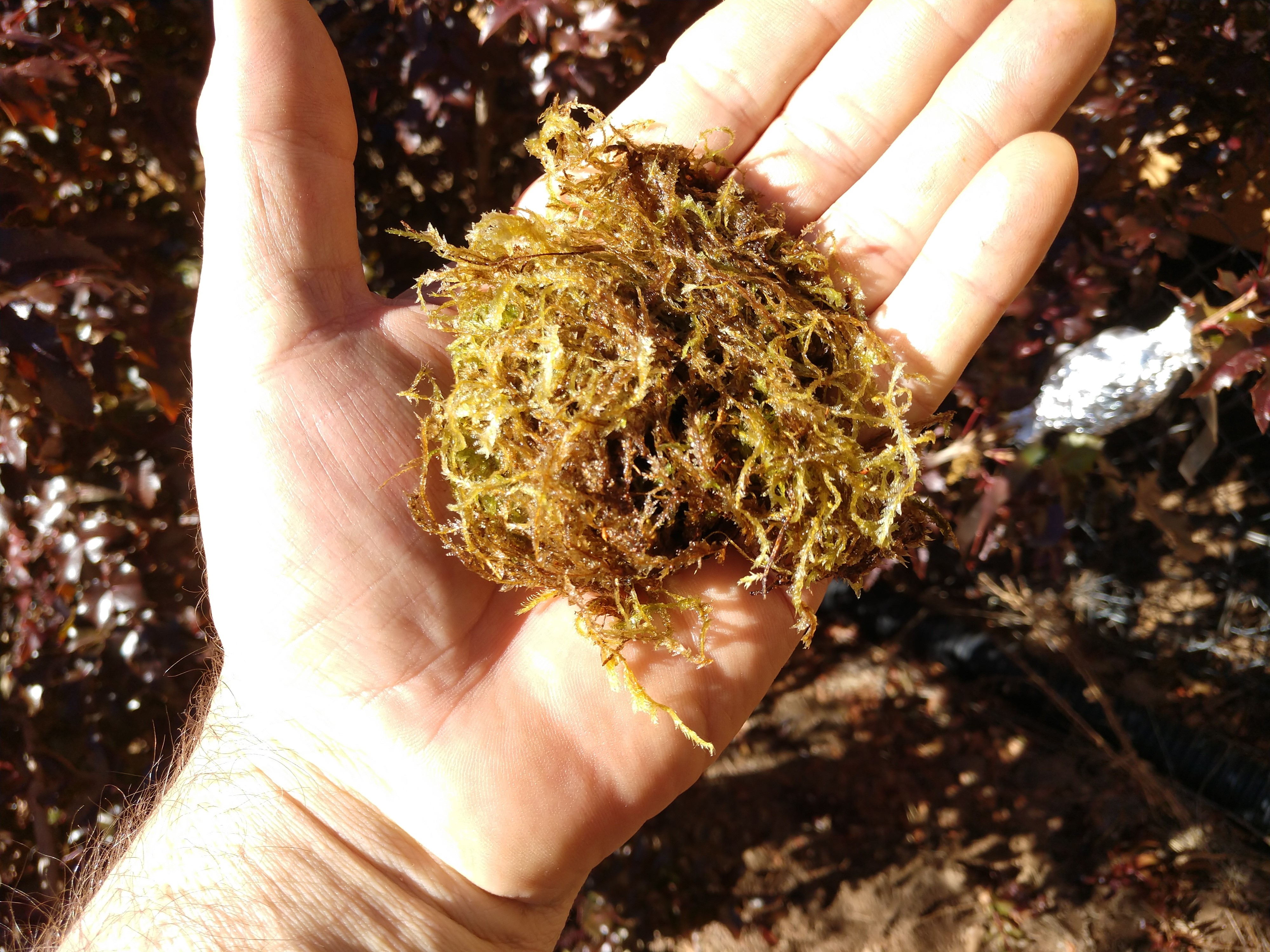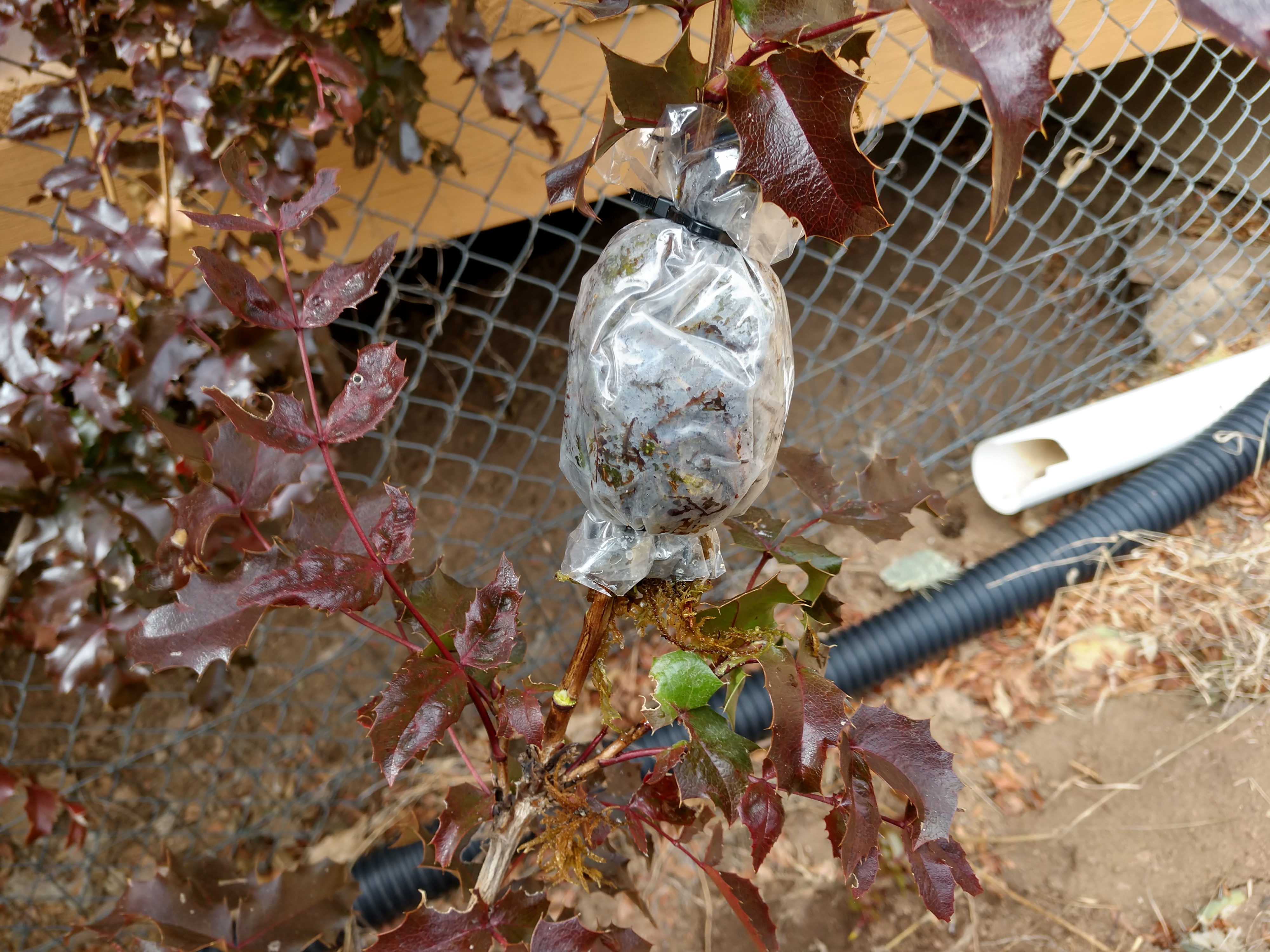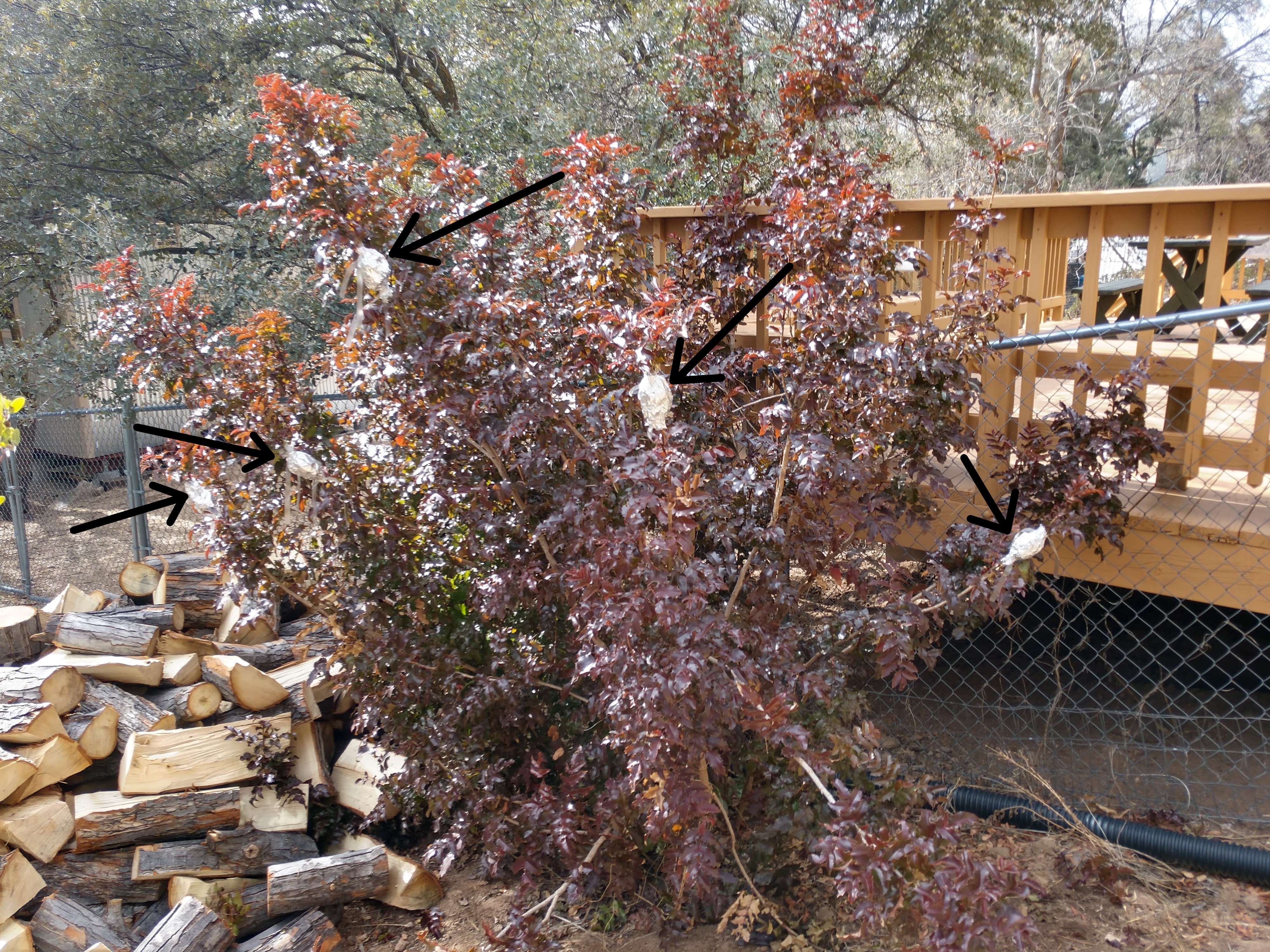 New Plants from Stem Cuttings - February 17, 2021 Jeff Schalau, Agent, Agriculture & Natural Resources University of Arizona Cooperative Extension, Yavapai County Most gardeners have been given a plant shoot by a friend and rooted it to produce a new plant. The scientific term for this process is "asexual propagation". Asexual propagation includes growing plants using cuttings, air/tip layering, plant division, budding, grafting, and tissue culture. Each plant derived from asexual means is genetically identical (a clone) to its mother plant. It should have the same leaf shape, flower/fruit characteristics, growth form, vigor, and so on, as the parent plant from which it was grown. Most indoor plants are easily rooted in plain water and cacti and succulents in well-drained mineral soil. Woody plants can be more difficult to propagate. Depending on the species, you may have to research the timing and concentration of rooting compound to increase your chances of success. The four main types of stem cuttings are herbaceous, softwood, semi-hardwood, and hardwood. Leaf and root cuttings can also be used. These terms reflect the growth stage of the stock plant, which is one of the most important factors influencing whether cuttings will root. For practical purposes, letís review some of the practices that will increase your success in rooting cuttings. Always take cuttings with a sharp, sanitized blade to reduce injury to the parent plant and minimize disease transmission. To sanitize, swish the cutting tool in rubbing alcohol for a few seconds. Remove flowers and flower buds from cuttings to allow the cutting to use its energy and stored carbohydrates for root and shoot formation rather than fruit and seed production. To obtain more uniform rooting, you should consider using a rooting compound containing indole butyric acid (IBA) or naphthalene acetic acid (NAA). Prevent possible contamination of the entire supply of rooting hormone by putting some in a separate container for dipping cuttings. I often use a small plastic sandwich bag. A small container of rooting compound lasts a long time. The brand makes little difference and instructions for use are included on the container. Select cuttings from vigorous, healthy wood, preferably from the upper part of the plant. Avoid excessively vigorous shoots as well as weak, spindly growth. Once cuttings are made, they must be placed into a growth medium such as coarse sand, vermiculite, soil, water, or a mixture of peat and perlite. It is important to choose the correct rooting medium to get optimum rooting in the shortest time. In general, the rooting medium should be sterile, have little or no nitrogen fertilizer, drain well enough to provide oxygen, and retain enough moisture to prevent water stress. Moisten the medium before inserting cuttings and keep it evenly moist while cuttings are rooting and forming new shoots. Some plants root better in warm soil. Commercial operations often do this by heating the propagation beds. Tip cuttings are also commonly used in production nurseries. Here, a 2 to 6-inch piece of stem, including the terminal bud is cut off the mother plant just below a node. Remove lower leaves that would touch or be below the rooting medium. Dip the stem in rooting hormone. Gently tap the end of the cutting to remove excess hormone. Insert the cutting deeply enough into the media to support itself. At least one node must be below the surface. Commercial producers propagate cuttings in greenhouses, but you can simply put a thin plastic bag (like those in the grocery store vegetable department) over the top of the pot to increase the humidity and place it in a bright location indoors. Once rooted, plant the cutting in a clean pot preferably filled with sterile potting soil. Grow rooted outdoor plants outdoors and indoor plants in a bright spot inside your house. Air layering is another method that can be used in plant propagation. The stem is wounded and encased in moist sphagnum moss into which roots grow. Once an adequate root system has been produced, the rooted stem is cut from the parent plant. Start with easy-to-root plants such as figs or grapes, then advance to more difficult species. There are many excellent publications and videos available on this topic. Visit the online version (see URL below) of this column for additional information. Have fun and share your plants with friends. You can follow the Backyard Gardener on Twitter Ė use the link on the BYG website. If you have other gardening questions, email the Master Gardener Help Desk in Prescott (prescottmg@gmail.com) or Camp Verde (verdevalleymg@gmail.com) and be sure to include your name, location, and phone number. Find past Backyard Gardener columns or provide feedback at the Backyard Gardener web site: https://cals.arizona.edu/yavapai/anr/hort/byg/. Images  This series of photos demonstrates the air layering process on my Oregon grape (Mahonia aquifolium) shrub. I found it growing in my garden several years ago and transplanted it to a suitable location in my yard. It has done well and I like it for many reasons: winter color, spring blooms, rangy growth form, and drought tolerance (it does not receive any irrigation). In wounding the stem, I cut a 1/4" wide strip of bark off (including the cambium) the applied rooting hormone (IBA) to the wounded area (Photo by Jeff Schalau, University of Arizona).
This series of photos demonstrates the air layering process on my Oregon grape (Mahonia aquifolium) shrub. I found it growing in my garden several years ago and transplanted it to a suitable location in my yard. It has done well and I like it for many reasons: winter color, spring blooms, rangy growth form, and drought tolerance (it does not receive any irrigation). In wounding the stem, I cut a 1/4" wide strip of bark off (including the cambium) the applied rooting hormone (IBA) to the wounded area (Photo by Jeff Schalau, University of Arizona). Damp sphagnum moss ready to wrap around the wounded, IBA treated stem. This sphagnum smells so good too (Photo by Jeff Schalau, University of Arizona).
Damp sphagnum moss ready to wrap around the wounded, IBA treated stem. This sphagnum smells so good too (Photo by Jeff Schalau, University of Arizona). I cut a used plastic bag into several 6" x 15" pieces, wrapped these around the sphagnum, and sealed each end with small cable ties (Photo by Jeff Schalau, University of Arizona).
I cut a used plastic bag into several 6" x 15" pieces, wrapped these around the sphagnum, and sealed each end with small cable ties (Photo by Jeff Schalau, University of Arizona). To keep light out and minimize heat build-up, I covered the plastic with aluminum foil and tied the ends with nursey tie tape. Once plentiful roots form, each rooted shoot can be cut off and planted in a pot and placed in a protected location to grow more roots and become established before transplanting (Photo by Jeff Schalau, University of Arizona).
To keep light out and minimize heat build-up, I covered the plastic with aluminum foil and tied the ends with nursey tie tape. Once plentiful roots form, each rooted shoot can be cut off and planted in a pot and placed in a protected location to grow more roots and become established before transplanting (Photo by Jeff Schalau, University of Arizona). The entire plant is shown with arrows pointing to the air layered stems. I will be sharing the results in a month or so on the Yavapai County Master Gardener Facebook page (Photo by Jeff Schalau, University of Arizona).
The entire plant is shown with arrows pointing to the air layered stems. I will be sharing the results in a month or so on the Yavapai County Master Gardener Facebook page (Photo by Jeff Schalau, University of Arizona).Additional Resources Air Layering for Difficult-to-Root Plants, Texas A & M Agrilife Extension aggie-horticulture.tamu.edu/extension/ornamentals/airlayer/airlayer.html Plant Propagation by Layering, Perdue University Cooperative Extension Service ag.purdue.edu/hla/pubs/HO/HO-1-W.pdf Plant Propagation by Layering, North Carolina State University Extension content.ces.ncsu.edu/plant-propagation-by-layering-instructions-for-the-home-gardener Layering Propagation for the Home Gardener, Oklahoma State University Extension extension.okstate.edu/fact-sheets/layering-propagation-for-the-home-gardener.html |